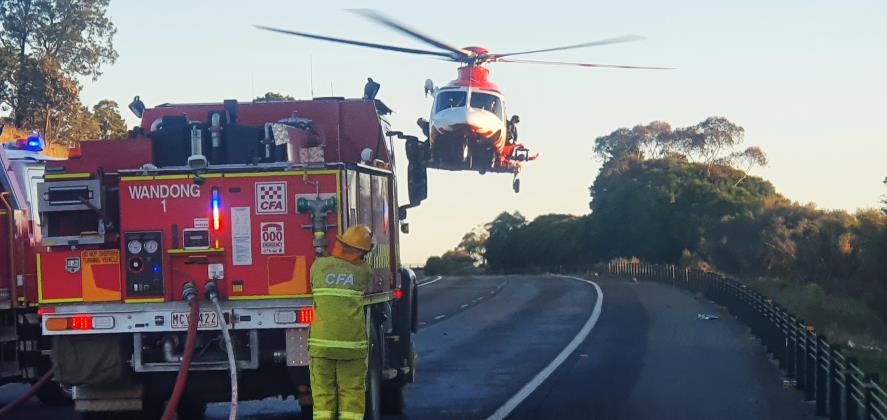
Today CFA released its emergency response data from the second quarter of the 2020-21 financial year.
The most recent data from 1 October to 31 December 2020 showed CFA brigades responded to 7,673 incidents, of which 3,318 required an emergency response.
For 82 per cent of incidents that required emergency response, the community received a fire service within the standard response time.
CFA Chief Officer Jason Heffernan said the data highlighted the hard work of all CFA firefighters right across Victoria.
“These results reflect the hard work and dedicated service of our volunteer workforce who respond to emergencies such as grass and bushfires, structural fires, HAZMAT incidents, road accidents, rescue incidents and more to keep the Victorian community safe,” he said.
“I’m inspired by how our members remained adaptable in their response to changing lockdown restrictions in Victoria during this period, which ensured our service to the community remained unaffected.”
Tragically, one person died in a residential fire within CFA areas during the period.
“While our main focus was on bushfire safety during the summer fire season, this is a timely reminder for people to ensure their heaters, chimneys and electrical appliances are in safe, working condition throughout the winter months,” Chief Officer Heffernan said.
“We encourage everyone to install interconnected smoke alarms in all bedrooms, hallways and living areas of their homes and to check the batteries regularly,” he said.
The results: Quarter Two (October – December) 2020/21
In CFA’s response area, the Community Service Delivery Standard compliance rate was 82 per cent. This rate is a measure of the first truck arriving on scene, regardless of brigade area.
The Quarter Two figures show CFA brigades continue to perform well across a variety of urban and rural environments, including:
- CFA and other fire services responded to 75.9 per cent of emergency incidents in significant urban areas within the standard response time of 8 minutes.
- CFA and other fire services responded to 82.4 per cent of emergency incidents in all other urban areas within the standard response time of 10 minutes.
- CFA and other fire services responded to 99 per cent of emergency incidents in areas with predominantly natural surroundings within the standard response time of 20 minutes.
The transition of CFA integrated and career-only response areas to FRV on 1 July 2020, a quieter bushfire season and COVID-19 restrictions all contributed to a reduction in the number of emergency incidents CFA responded to compared to the equivalent quarter in 2019-20.
Because data is drawn from a smaller sample size this impacts the overall response times as single incidents where the target was not met have a bigger impact on the overall result.
Response data is reported by Hazard Class, which defines the risk type for a given area. Each brigade area may contain multiple Hazard Classes. Each Hazard Class has a Service Delivery Standard, which is a predefined response time target for brigades attending emergency events.
Find out more about CFA response times at: https://www.cfa.vic.gov.au/about-us/publications/emergency-response-times
| Submitted by |
CFA News & Media |